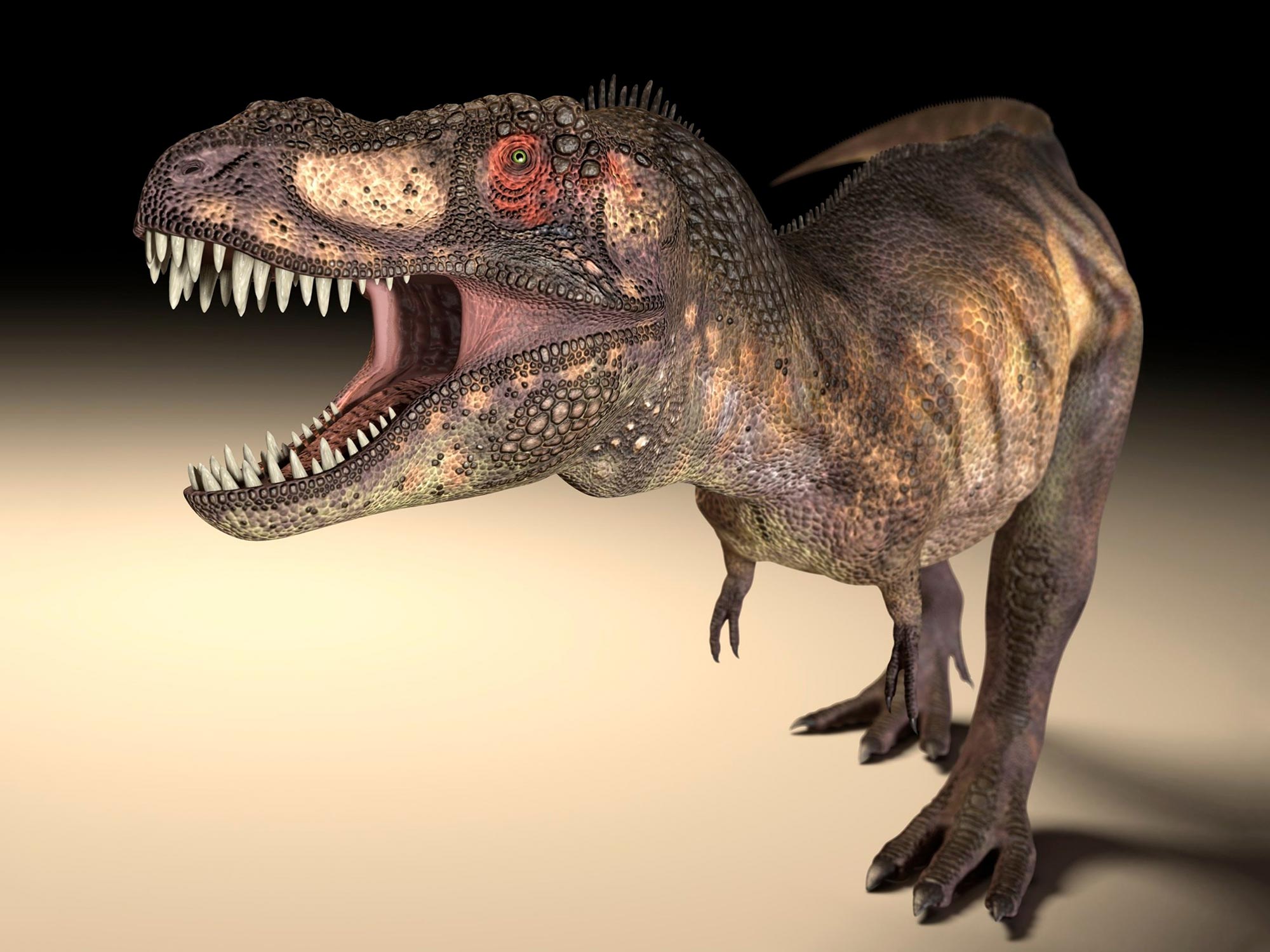
Novas pesquisas mostram que grandes dinossauros predadores desenvolveram diferentes formas de cavidades oculares para lidar melhor com forças de mordida mais altas.
De acordo com uma nova pesquisa, grandes dinossauros predadores, como Tiranossauro Rex Várias formas de cavidades oculares foram desenvolvidas para lidar melhor com as forças de mordida mais altas.
Enquanto em muitos animais, incluindo a maioria dos dinossauros, a cavidade ocular é um orifício circular no crânio que contém o globo ocular, isso é bem diferente em grandes carnívoros.
Um novo estudo revelou como as órbitas ovais ou ovais incomuns encontradas nos crânios desses predadores podem ter evoluído para ajudar o crânio a absorver o choque quando ataca a presa. Esta pesquisa de cientistas da Universidade de Birminghampublicado hoje (11 de agosto de 2022) em Biologia da Comunicação.

Reconstrução do crânio e vida em Tyrannosaurus Rex usando a cavidade ocular original e olho (esquerda) e reconstrução virtual usando uma cavidade ocular circular e hipertrofia ocular (direita). Crédito: Dr. Stefan Lautschlager, Universidade de Birmingham
Dr. Stefan Luttenschlager, Professor Sênior em Paleobiologia na[{” attribute=””>University of Birmingham and author of the new study, analyzed the shape of the eye sockets of ca. 500 different dinosaurs and related species.
“The results show that only some dinosaurs had eye sockets that were elliptical or keyhole-shaped,” said Dr. Stephan Lautenschlager. “However, all of those were large, carnivorous dinosaurs with skull lengths of 1 m or more.”

Computer simulations of hypothetical dinosaur skulls. Colors indicate skull stress. High stresses occur in the skull with a round eye socket (top), lower stresses in a skull with a keyhole-shaped eye socket (bottom). Credit: Dr. Stephan Lautenschlager, University of Birmingham
Dr. Lautenschlager tested what purpose these unusual eye socket shapes could have by using computer simulations and stress analysis.
The results demonstrated that a skull with a circular eye socket was more prone to high stresses during biting. However, if these were replaced with other eye socket shapes stresses were significantly reduced. This allowed top predators, including Tyrannosaurus rex, to evolve high bite forces without compromising skull stability.
The study also showed that most plant-eating species and juvenile individuals retained a circular eye socket. Only large carnivores adopted other morphologies, such as elliptical, keyhole-shaped, or figure-of-eight-shaped eye sockets.

Skulls of different dinosaurs showing variation in eye socket shape (stippled outline). Credit: Dr. Stephan Lautenschlager, University of Birmingham
Dr. Lautenschlager added: “In these species, just the upper part of the eye socket was actually occupied by the eyeball. This also led to a relative reduction of eye size compared with skull size.”
The researchers also investigated what would have happened if eye size had increased at the same rate as skull length. In such a case, the eyes of Tyrannosaurus rex would have been up to 30 cm (12 inches) in diameter and weighed nearly 20 kg (44 pounds). This is instead of an estimated 13 cm (5 inches) and 2 kg (4.4 pounds).
Reference: “Functional and ecomorphological evolution of orbit shape in mesozoic archosaurs is driven by body size and diet” by Stephan Lautenschlager, 11 August 2022, Communications Biology.
DOI: 10.1038/s42003-022-03706-0